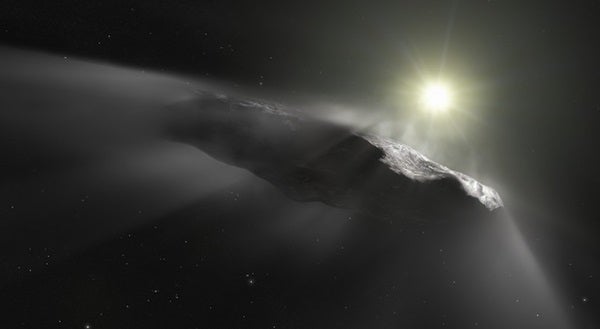Back in 2017, astronomers discovered the first interstellar object, ‘Oumuamua, as it swung through our solar system. And, just a few weeks ago, scientists spotted a second one — called C/2019 Q4 (Borisov) — paying us a visit.
Now astronomers are saying they could soon be discovering many new interstellar comets. A new telescope currently under construction in Chile, called the Large Synoptic Survey Telescope, will start scanning the skies in the next few years. Its wide-angle view will let it capture large sections of the night sky every night.
As a result, every year LSST could find a few ‘Oumuamua-sized objects, plus more than 100 interstellar rocks at least a yard wide, according to a new study posted to the preprint site arxiv.org and accepted for publication in The Astrophysical Journal Letters. And the number of interstellar visitors that astronomers find could offer new insights into our own solar system.
Swinging by
Planetary systems are more likely to kick objects out if they have massive planets, like Jupiter, sitting far from their suns. Like a spacecraft that swings by a planet, gets a gravity assist and ventures outward in the solar system, a rocky object can escape a star’s pull more easily if it swings by another massive object. The more massive the object and the farther it is from the star, the more likely the rocky object is to escape.
Current methods for finding exoplanets work best for worlds close to their stars. So, while astronomers have found many massive exoplanets, most tend to be very close to their suns — so-called “Hot Jupiters.” But recent observations of other solar systems hint that it should be common to find planets sitting farther from their suns.
These findings prompted astronomers Malena Rice and Gregory Laughlin of Yale University to simulate how often rocky objects like ‘Oumuamua might escape their birth systems and pass through our own. If we find fewer interstellar visitors in the future than they predict, it may mean massive planets far from their stars, like Jupiter, are actually rarer than expected.
In any case, finding more interstellar objects is good news for learning about other planetary systems.
“This is really our prime opportunity to actually study materials from extrasolar systems up close,” Rice says. “That these objects are just being thrown into our system for us to observe is really amazing. Usually, you have to observe these extrasolar systems from super far away.”











